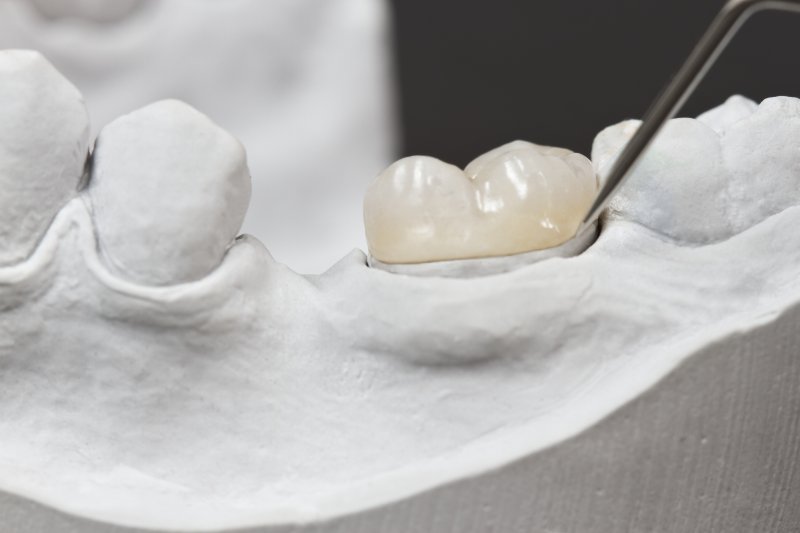Which Material is Best When Receiving a Dental Crown?
September 15, 2023

You want a dental crown to repair your broken tooth, but you’ve heard there are a multitude of options to choose from when it comes to the material that is used to create it. Knowing which one is right for your needs will likely take a skilled professional who can survey the area and the severity of the damage while also considering your personal preference. Read on to discover the different types of materials that can be used to create dental crowns and which one you can expect to work for you.
Dental Crown Materials: How Many Are There?
When asked this question, most people are likely to answer with one, two, or maybe even three kinds of material. However, there are many additional options you and your dentist can choose from when preparing your tooth for optimal protection. The following are the most common substances used to fabricate custom restorations like dental crowns:
- E-Max – These are made from lithium disilicate, which is a type of ceramic. Similar to zirconia, it is a strong material that offers a pleasing appearance. It helps to reinforce your tooth while also minimizing the potential for damage in the future.
- Zirconia – These kinds of crowns are less likely to break or fracture, and they’re strong and durable. There is less tooth structure that must be removed, and they can be blended to match the remainder of your smile.
- Gold (metal alloy) – Known for their strong durability, these crowns will not corrode. They’ll also be more obvious to others because of their shade; however, if you need a molar or back tooth replaced, they may not be a bad option.
- Porcelain Fused to Metal – These are often popular because they mimic natural tooth enamel above the gumline. They are, however, attached to a metal base that remains strong and less likely to fall out.
- Porcelain – They’re known for their beautiful, lifelike appearance, and they are not conductors of heat or cold, which is great for anyone with tooth sensitivity. They’re also ideal for anyone with a metal allergy.
- Dental Composite – This type of material is less expensive than other options, and it is softer than porcelain. Also, composite is ideal if you need a temporary for longer than you anticipate. It is also commonly used to make strong crowns that are milled using CAD/CAM technology (i.e., CEREC).
Which Option Is Right for You?
The only way to know which type of material should be used to craft your custom restoration is to meet with your dentist to discuss it during a scheduled consultation. This will allow them to examine your tooth and its location.
Based on where the vulnerable tooth lives within your mouth as well as how damaged or decayed it might be, certain materials may be more favorable than others. While gold may be best for those teeth located toward the back of the mouth, porcelain or EMAX may be recommended for teeth that are more visible to others.
No matter which kind you choose to move forward with, know that the use of a dental crown will help to ensure the longevity and functionality of your smile year after year.
About the Author
Dr. Ahmed Saad is a Vienna dentist who has spent more than 15 years in the dental field. Following in the footsteps of his parents, both of whom are dentists, he completed his dental doctorate at the University of Southern California School of Dentistry. As one of the two leading dentists at Pace Dental, he works with patients who are suffering from damaged or decayed smiles. Offering CEREC dental crowns, he can rebuild and repair teeth for greater use and aesthetics. Visit our website or call (703) 705-7476 to learn more.
No Comments
No comments yet.
RSS feed for comments on this post.
Sorry, the comment form is closed at this time.
